
Making tarpaulin is generally similar to making cloth. Polyethylene is the only base. The polypropylene strips are intertwined to form a dense mesh. Then this polypropylene base is additionally laminated on both sides with molten polyethylene, as a result, it is waterproof and resistant to UV rays..
The edges of the canvas are sealed, there are eyelets (rings) around the entire perimeter, which allow you to attach the awning where necessary. The eyelets are installed one meter apart, a polymer cord runs along the edge.
Tarpaulin manufacturing technology appeared in the East. Now this covering material is made in Korea, China and Vietnam. The most famous brands: Tarpaulin, Tarpik, Rendell, Oxiss and Tarpix.
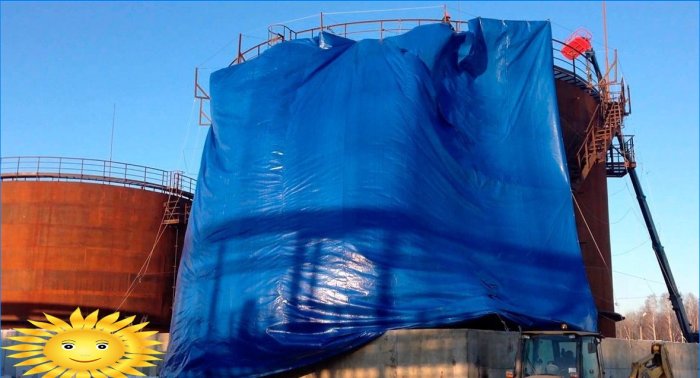
Tarpaulin density can vary from 50 to 250 g / m2. Most popular options: 75, 120 and 180 gsm2, they usually differ in color. For example, tarpaulin with a density of 120 g / m2 traditionally green, and 180 g / m22 – blue.
To understand what tarpaulin is capable of, let’s give an example: for storing sugar and flour, bags of this material are used with a minimum density of 50 g / m2. At the same time, the canvas for bags is not laminated on both sides, as is customary for the production of a more durable material. Despite this, the tarpaulin bag withstands a load of 50 kg. Of course, materials with a noticeably higher density are capable of more.
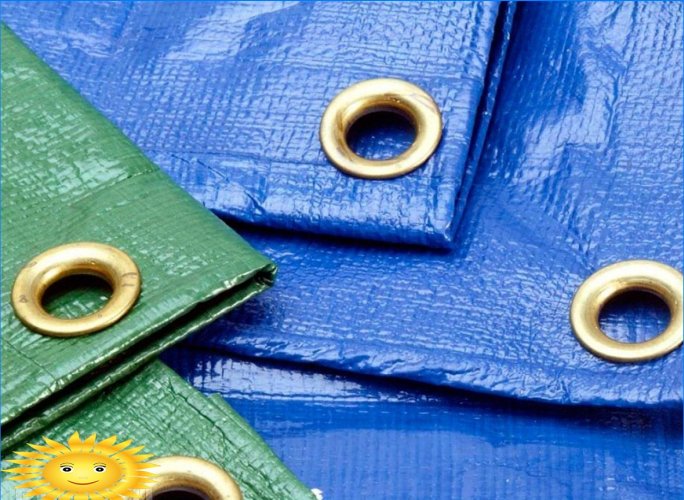
Scope of application of tarpaulin:
- in agriculture to shelter haystacks and grain crops;
- in the garden – as a covering material for beds and greenhouses, protecting plants from frost or the scorching sun;
- shelter for building materials. Moreover, you can additionally simply lay the tarpaulin on the ground so that lumber lies on it, for which contact with a damp surface is very undesirable;
- temporary shelter for foundations and roofs;
- as curtains in car washes;
- cover for cars, boats and motorcycles;
- canopy or bedding when hiking. A small tarpaulin awning will be an excellent assistant for fishermen, mushroom pickers, hunters, will help to hide from the rain and not catch a cold while sitting on damp ground;
- awnings and awnings from the heat and precipitation in the personal plot;
- shelter for the carriage of goods, awning for trucks and wagons;
- a fence for light showers, including a summer shower in the country;
- debris shelter for pools;
- tarpaulin can also be used as a bottom base when creating mini-reservoirs, artificial ponds, swimming pools;
- and you can quickly make a hammock from this durable material.
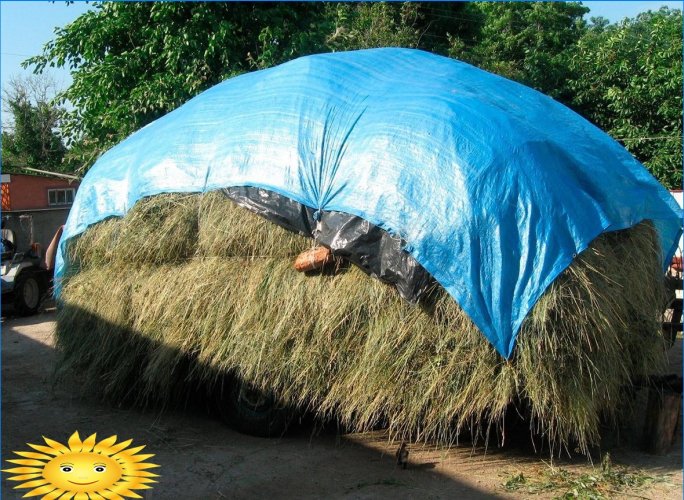

As you can see, the scope of application of tarpaulin is very large. Let us dwell separately on construction. This material can be used not only to protect newly poured foundations or unfinished structures left to winter in the open air. Tarpaulin will reliably protect all building materials, unfinished roofing, and will also become an excellent basis for building a greenhouse.
What is a hothouse? A very simple temporary structure that helps create an enclosed space on a construction site. Inside, the temperature will be more comfortable, workers will be protected from precipitation, which will allow them to engage in construction work or facade decoration even in winter or during rain. Tarpaulin greenhouses are erected on a special frame or directly on existing structures.
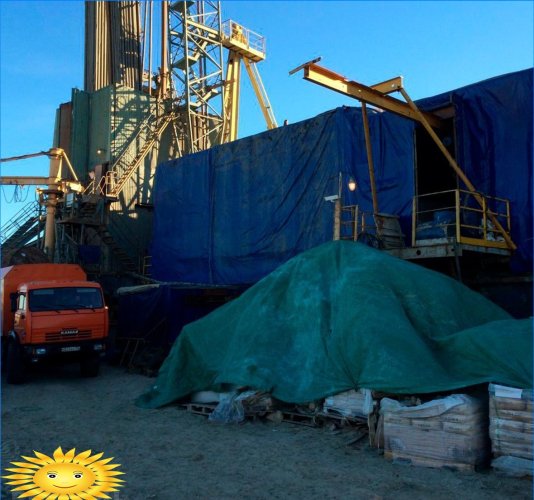
Tarpaulin, due to its properties, serves as an excellent waterproofing. This material is able to withstand temperatures from -70 to +180 ° C. Elasticity is high, while tarpaulin does not stretch. Canvases can be interconnected, obtaining a covering material with an area of about 400 m2, which can serve as a temporary roof or protection of the renovated facade of an apartment building.
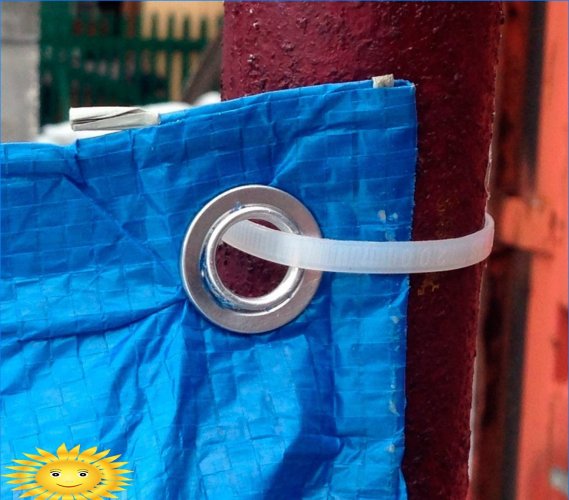
Negative reviews about tarpaulin mainly concern eyelets. Users write that rings inserted into the canvas are often simply torn out by gusts of wind and cannot hold the fastening cords. In addition, material can wipe in corners.
As for the price of tarpaulin, it starts at 33 rubles per square meter. For covering material with a density of 180 g / m22 already have to pay about 62 rubles for a “square”.

What are the specific features of tarpaulin and how is it commonly used as a covering material?
Can you provide more information on the features and applications of tarpaulin? I’m curious to know what makes it an ideal covering material for various purposes.